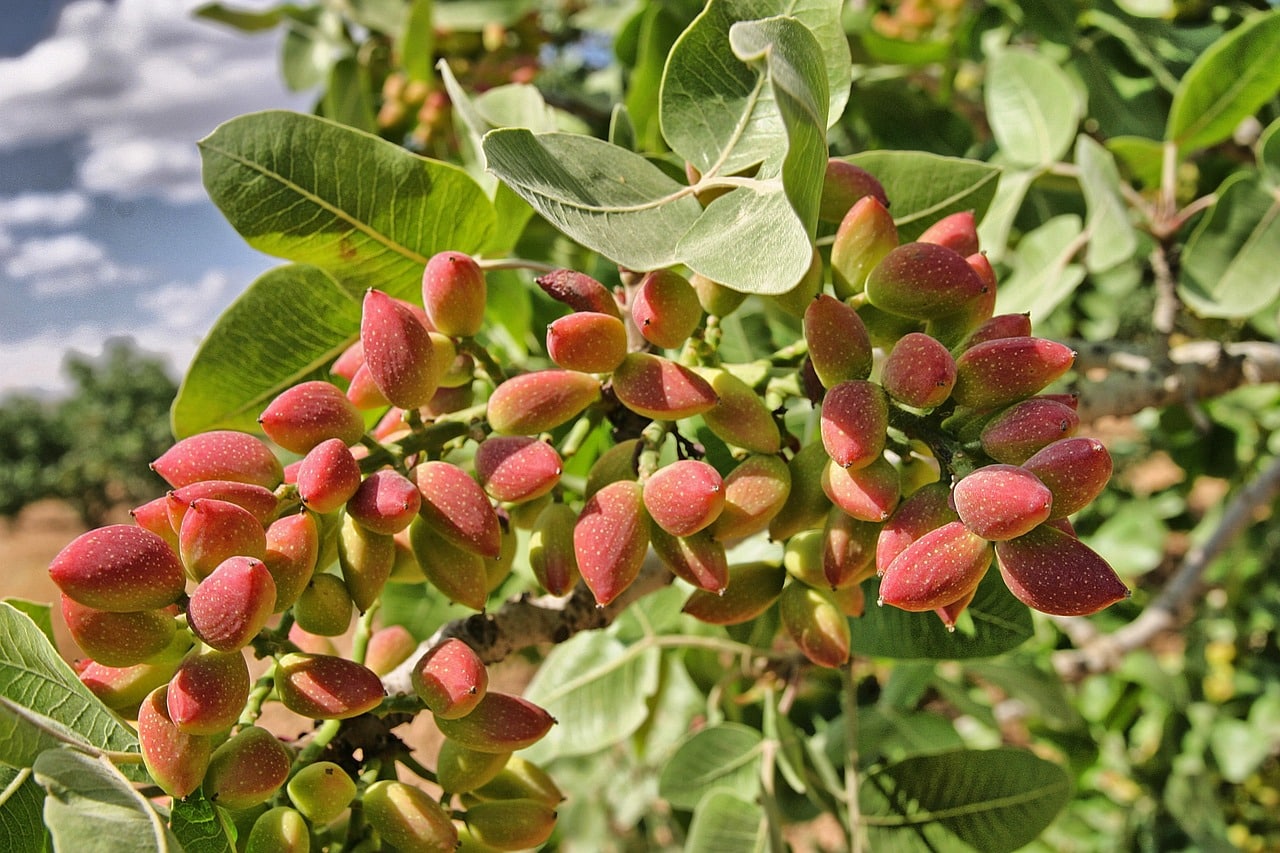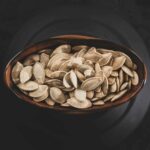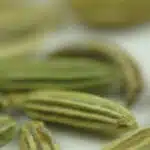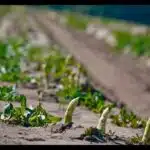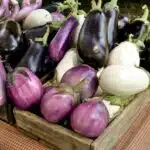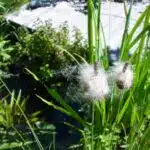Growing your own peanuts is something that many home gardeners might never consider, but it’s actually a surprisingly easy process. Peanuts are a unique crop in that they grow underground, rather than above the surface like other vegetables and fruits. But don’t let this scare you – with the right preparation and planting, growing your own peanuts at home can be an incredibly rewarding experience.
Not only will you get to enjoy the satisfaction of harvesting your own crops, but you’ll also be able to make sure that they are free of any additives or preservatives. It’s an amazing feeling being able to pick fresh peanuts straight from your very own garden!
If you’re ready to take on the challenge of growing peanuts in your home garden, then this article will provide all the information you need to get started. We’ll cover everything from choosing the right soil type and preparing for planting up to harvesting and storage. By the end of this article, you’ll have all the knowledge needed to start growing your own peanuts with ease!
Identifying Your Peanut Plant
Growing your own peanuts may feel like a daunting task, but it’s actually as easy as shelling out the time and effort. Like any other plant, success starts with identifying what type of peanut plant you will be growing. As the old adage goes, knowledge is power; understanding the basics will help you grow your own peanuts with ease.
To begin, you’ll want to determine if you’re planting Virginia-type or Spanish-type peanuts. The former are larger and oval in shape, while Spanish-type are small and rounder in appearance. Virginia-types have a thicker shell that can be easier for harvesting large quantities at once. On the other hand, Spanish-types mature more quickly and require less maintenance throughout the season.
In either case, these two types of plants have many similarities: they both need warm temperatures, require well-drained soil with plenty of organic matter, and benefit from being planted early in the springtime when there’s no risk of frost. With just a bit of research and commitment to caring for your plants, you’ll find that growing peanuts can be an incredibly rewarding experience! Now all that’s left is to choose a planting site that meets all these requirements…
Choosing A Planting Site
Did you know that peanuts are actually a legume, related to beans and lentils? It’s true – and it also means that growing your own is surprisingly simple! Choosing the right planting site is the next step in starting your own peanuts.
When selecting an ideal spot for your peanut plants, pay attention to the amount of sunlight they’ll receive. Peanuts love sunny areas, so make sure that you pick somewhere that gets at least 6 hours of direct sunlight a day. It’s also important to note that peanuts prefer well-draining soil and need plenty of moisture throughout their growing season. A raised bed or planter box would be a great choice for those who have limited space.
Additionally, it’s important to consider how long your peanut plants will take to mature before harvesting. If you live in a cooler climate, choose varieties specifically bred for shorter seasons; otherwise, you can go with traditional types which may take up to four months before being ready for harvest. Once you’ve identified the right variety and location, it’s time to prepare the soil before planting your peanuts.
Preparing The Soil
With a little effort and patience, you can be munching on your own home-grown peanuts in just a few months! But before we get to the fun part of sowing the seeds, we must first prepare the soil. Here’s how.
To begin, it’s important to note that peanuts grow best in soil with a pH level of 6 – 7. You can get your soil tested at your local agricultural extension service to determine the right balance for optimal peanut growth. Additionally, you will want to make sure that the planting site is well draining and receives plenty of sun throughout the day – at least 8 hours worth.
As for what kind of soil you should use for growing peanuts, sandy loam is ideal. This type of soil drains quickly, is easy to work with, and provides ample nourishment for young plants. To ensure proper drainage, mix some organic matter such as compost or manure into the sandy loam before planting. These materials will also provide essential nutrients like nitrogen and phosphorus which will help your peanuts thrive and produce an abundant harvest!
Now that your soil is ready for planting and has been amended with organic material, it’s time to move onto the next step: sowing those seeds!
Sowing The Seeds
As the old adage goes, ‘preparation is key’ and this couldn’t be truer when it comes to sowing the seeds for growing your own peanuts. With the soil now prepared, it’s time to sow those seeds, thus beginning the journey of cultivating your very own peanuts.
When sowing your peanut seeds, you should aim to plant them approximately one inch deep into the ground and three inches apart from each other. The best time to plant these seeds is in late spring or early summer when the soil temperature has reached at least 65 degrees Fahrenheit (18 degrees Celsius). Additionally, it would be a good idea to mulch around each seed as this will help keep weeds away and also help retain moisture for optimum growth.
Once all your seeds are planted, it’s important that you give them plenty of attention and care in order for them to grow strong and healthy. This includes watering and feeding requirements which will be discussed in more detail below. So with an understanding of what needs doing now that you have sown the peanut seeds, you can look forward to harvesting your very own healthy crop of peanuts!
Watering And Feeding Requirements
Once you have sown your peanuts, you’ll need to water and feed them for the best results. Watering should be done regularly, especially during hot summer months. About an inch of water per week is ideal for providing the peanuts with enough hydration. You’ll also need to feed the plants once a month, using standard fertilizer that’s been adjusted to 6-10-4 or 8-24-24 NPK ratios.
In addition to watering and feeding, it’s important to make sure weeds don’t take over your peanut patch. If they do, they can compete with your peanuts for nutrients and moisture, which will reduce the yield of pods at harvest time. To prevent this from happening, pull any visible weeds and keep an eye on the area in case more start growing.
Finally, pests may also pose a problem if you’re growing peanuts outdoors. Insects such as aphids and cutworms can wreak havoc on your crop if left unchecked. Try using pest traps and insecticides specifically designed for use around food crops to deter these critters without harming your plants or the environment. With proper care and management of weeds and pests, you’ll soon have a bumper harvest of fresh peanuts!
Managing Weeds And Pests
It’s almost too good to be true – growing your own peanuts is actually ridiculously easy! But now that you’ve got the hang of planting, it’s time to move onto the next step. That’s right – managing weeds and pests. Coincidentally, this is also an important part of ensuring a successful peanut harvest.
When it comes to controlling weeds and pests, prevention is key. Regularly pull any weeds that have sprouted up in your peanut patch. If you notice any signs of pests or disease, it’s best to act quickly to avoid long-term damage to your crop. Use an organic spray or powder as a first line of defense against them.
Finally, another way to help manage potential problems with weeds and pests is by rotating your crops every year so they don’t get used to the same conditions and soil nutrients as before. With a few simple steps, you can ensure your peanut plants will thrive and yield a tasty harvest come autumn! Now that’s taken care of, let’s look into storing those peanuts for winter use!
Storing The Peanuts
Once you’ve gone through the steps of planting and caring for your peanuts, it’s time to look into storing them. This part of the process is just as important as any other.
Storing peanuts is relatively simple, but there are a few things to take into consideration. Firstly, make sure that the location where you’re storing them is completely dry and well-ventilated. Otherwise, your peanuts could become damp or moldy. Also, avoid keeping them near foods with strong odors, as these can transfer to the peanuts and affect their taste.
Finally, it’s important to be aware of how long your peanuts can last in storage. Depending on the type of peanut you’re growing, they can stay fresh for up to 12 months if stored properly. To ensure optimal freshness, keep an eye on their condition every few weeks and discard any that look rotten or discolored. With proper storage, your homegrown peanuts will remain fresh and delicious!
Now that we’ve discussed storage tips for your peanuts, let’s move onto when to harvest them for maximum flavor and nutrition.
When To Harvest Peanuts
Harvesting peanuts may seem like a daunting task, but with the right preparation and knowledge it can be quite simple. You may be concerned about when to harvest them, but don’t worry – there are easy tell-tale signs that indicate when they’re ready!
First off, you’ll want to look for yellowed leaves on the plant. This is usually one of the first signs that it’s time to start harvesting your peanuts. Additionally, you’ll want to look out for the stems turning yellow and drying up. Once these signs begin to show, your peanuts should be ready for harvest in around two weeks’ time.
In order to ensure optimal flavor and nutrition from your peanuts, it’s important to take care during the harvesting process. Start by gently pulling back the foliage so that you can get a better view of what’s happening below ground. When you see some of the shells emerging from the surface of your soil, carefully dig around each one until you’ve retrieved all of them. With this method, you can reap all of the delicious rewards that come with growing your own peanuts!
Curing And Drying Peanuts
Once you’ve harvested your peanuts, the next step is curing and drying. This part of the process requires special attention to ensure that the peanuts are well-preserved for later use.
Curing peanuts involves washing them off, then laying them out somewhere warm and dry for about a week. Doing this helps to make sure that any moisture left in the pods is removed before moving on to drying. If there’s too much moisture, it can cause mold or other damage to the nuts.
After curing, it’s time for drying. The best way to do this is by spreading out your peanuts on a sheet in an area with good airflow and low humidity. Leave them out until they’re completely dry – this should take around two weeks or so – then store them in an airtight container to prevent further moisture from getting inside.
Common Growing Mistakes To Avoid
Growing peanuts is an incredibly rewarding and easy task, but it’s not without its pitfalls. If you’re new to this endeavor, or if you’ve had issues in the past, there are a few common mistakes to avoid. To illustrate the importance of avoiding these mistakes, think of growing peanuts like baking a cake: if you don’t follow the recipe correctly, your end result won’t be as delicious!
One mistake that many gardeners make is planting too early or late. Peanuts need warm soil temperatures and plenty of time in order to mature properly. Planting too soon can result in smaller yields while planting too late can reduce your crop altogether. Additionally, it’s important to make sure your soil has adequate drainage; otherwise your peanuts can rot before they have a chance to mature.
Finally, peanuts require a lot of sunlight for optimal growth. Make sure your plants are getting at least 8 hours of direct sunlight each day to ensure healthy development and good yields. With these tips in mind, you can ensure that your peanut growing adventures will be successful!
Benefits Of Growing Your Own Peanuts
Growing your own peanuts has many benefits. Not only is it relatively easy to do, but you also get to enjoy a fresher product that you grew yourself. Plus, you can have fun experimenting with different varieties of peanuts.
First, it’s important to note that growing peanuts is actually quite easy. All you need is some good soil and plenty of sun, and you can start planting right away. You don’t need any special equipment or knowledge for the process either – just follow the instructions on the package and you should be good to go.
Next, when you grow them yourself, you will get to enjoy fresh peanuts straight from the garden. They’ll be far tastier than anything from the store! And if you’re up for a challenge, there are many different varieties of peanuts available for planting so that you can mix it up every year.
Finally, growing your own peanuts is a great way to relax and have fun in the garden while also getting fresh produce that’s both delicious and healthy. So why not give it a try?
Different Varieties Of Peanuts
Growing your own peanuts is like unlocking a secret garden of flavors. With a little bit of soil, some patience, and the right know-how, you can discover an exciting range of varieties with unique flavors and textures. From creamy deliciousness to nutty sweetness, let’s dig into the world of different peanuts you can grow!
There are a few main varieties of peanuts that are used for cooking. Virginia peanuts have a large size and crunchy texture. They’re great for boiling, baking or making peanut butter. Spanish peanuts have smaller kernels with a reddish-brown skin that make them perfect for roasting or using as salted snacks. Valencia peanuts are known for their sweet flavor and are usually roasted in oil or salted before eating.
No matter which variety you choose, they all need similar conditions to grow: warm temperatures, full sun exposure and well-drained soil. With just a bit of care and attention, these tasty treats will be yours to enjoy in no time!
Companion Planting With Peanuts
Growing your own peanuts is almost too easy to believe! But, as you progress, there are many other considerations to be made. One of these is companion planting with peanuts.
Companion planting with peanuts can produce a variety of benefits. It can help protect the peanut plants from pests and diseases, as well as helping them to flourish in their environment by providing the right type of nutrients. This practice also helps plants form a symbiotic relationship that increases their yield and quality. For example, some plants can provide shade for the peanuts while others may attract beneficial insects that will help protect them from pests.
By integrating companion planting into your garden plan, you can ensure that your peanuts receive the best possible conditions for growth and development. This will result in higher yields, better quality nuts, and healthier soil overall – something everyone wants! And when done properly, it can also add an extra element of beauty to your garden space. So don’t miss out on this essential step in growing your own peanuts!
Peanut Recipes
With the right care and attention, you can turn your peanut dreams into a reality. Utilizing synecdoche, let us take a deeper look at how to make the most of our peanuts in terms of recipes.
Firstly, there is a wide variety of ways to use peanuts in cooking. From using them as a topping for salads or desserts – like ice cream sundaes – to grinding them down for use in sauces and marinades, there is something for everyone’s palate. Another way to enjoy these delicious legumes is by roasting them in the oven with some spices or herbs. The nutty flavor will be enhanced by the combination of flavors, creating a tasty treat that everyone can enjoy.
Moreover, peanut butter is an incredibly versatile ingredient that can be used in many different dishes. Whether it’s used as an addition to smoothies and milkshakes or combined with honey and other condiments as a spread on toast, it adds an indulgent flavor that can’t be beaten! Additionally, peanut butter can even be used in savory dishes like Thai-style stir-fries and curries.
In short, there are myriad ways to enjoy peanuts both sweet and savory! With so many options available, it won’t take much effort to find something that pleases you – now all you need are some troubleshooting tips to get started.
Troubleshooting Tips
It may seem daunting to try growing peanuts, but with a little patience and some troubleshooting tips, you can have success. While it’s true that peanuts take a long time to grow, the payoff is certainly worth it.
For starters, make sure you get your soil tested before planting. This way you can ensure that the soil has the correct nutrients for the plants to thrive. Plus, when you’re ready to harvest your peanuts, you’ll want to make sure they’re dry enough before taking them off the vine. If moisture levels are too high, it can cause mold and rot.
Finally, don’t forget about weeds! Peanuts need plenty of sunlight and air circulation in order for them to thrive. Remove any weeds or tall grasses around your peanut patch so they don’t block out light or prevent air circulation. With these helpful tips in mind, growing peanuts should be achievable!
Frequently Asked Questions
What Type Of Soil Is Best For Growing Peanuts?
When it comes to growing peanuts, the type of soil you use can make a big difference. Peanuts prefer well-drained loamy soil with good aeration so that the roots have plenty of room to spread out. A neutral pH level is also ideal; peanuts don’t do well in overly acidic or alkaline soils. If your soil isn’t quite ideal, you can always amend it with compost or other organic matter for better moisture retention and nutrient content.
It’s important to keep in mind that peanuts are a legume crop and need certain nutrients in order to grow properly. Nitrogen is particularly important, as this helps the plant produce more leaves and pods. Organic fertilizers that contain nitrogen will help ensure optimal growth and development of your peanut plants. Additionally, adding aged manure or compost to your soil can provide the necessary nutrients for successful peanut growth.
When planting peanuts, be sure to space them at least two feet apart so they have plenty of room to spread out as they grow. It’s also important to water regularly— preferably every day during hot weather—to ensure healthy growth and development of your peanut plants. With just a little effort and care, you can easily enjoy the delicious rewards of growing your own peanuts!
How Much Water And Fertilizer Do Peanuts Require?
When growing peanuts, it’s important to know how much water and fertilizer they require. Peanuts need plenty of water throughout their growth cycle, as they are a crop that is highly dependent on moisture. They should receive around 1 inch of water per week during the time they are actively growing. As far as fertilizers go, peanuts need a balanced mix of macronutrients such as nitrogen, phosphorus, and potassium to ensure adequate growth and development. A slow-release fertilizer or organic compost can help provide these nutrients in an ideal way.
It’s also important to note that peanuts are generally not heavy feeders and too much fertilizer can be harmful for them. Thus, it’s best to err on the side of caution when applying fertilizer so you don’t overdo it. Additionally, because peanuts are a shallow-rooted crop, regular weeding is essential for proper nutrient absorption and successful growth.
Good soil preparation and maintenance is key for healthy peanut plants, so be sure to pay attention to your soil pH levels and add amendments if needed before planting. With proper care and the right amount of water and fertilizer, you’ll be well on your way to harvesting a successful peanut harvest!
How Deep Do I Need To Plant The Peanut Seeds?
Planting the peanut seeds is an important part of growing your own peanuts. To do this, you’ll need to know how deep to plant them in the soil. It’s not as hard as it may seem!
To start, you should choose a spot with full sun and well-draining soil. Then, use a garden trowel or hoe to make furrows in the soil that are about four inches deep and eight inches apart. Place two peanut seeds per furrow and cover them up with one inch of soil. Water the area thoroughly after planting to ensure that the seeds are moist.
Caring for your peanut plants is easy too! Make sure to water regularly, approximately one inch per week, and apply fertilizer every few weeks to help with growth. Keep an eye out for weeds, pests, or disease and take care of them immediately if they appear. With proper care, you can look forward to harvesting your homegrown peanuts in no time!
How Can I Tell When The Peanuts Are Ready To Harvest?
You may be surprised to learn that peanuts are actually a type of legume, not a nut! By growing your own peanuts, you can enjoy their delicious flavor and nutritional value. But how can you tell when the peanuts are ready to harvest? Here’s what you need to know.
Statistically speaking, it takes approximately three months for peanut plants to reach full maturity. To determine if your peanuts are ready to harvest, carefully dig around the roots of the plant and remove a few pods from the ground. If the pods and shells are brown, then they are ready for harvesting. However, if they appear green or yellow in color, then they require more time to mature.
Once harvested, it is important to store your peanuts correctly in order for them to stay fresh and maintain their flavor. Peanuts should be stored in an airtight container away from direct sunlight. Additionally, it is best practice to check them every few weeks for signs of mold or decay as this can cause them to spoil quickly.
Successfully harvesting your own peanuts can be incredibly rewarding and provides you with a great source of nutrition – so why not give it a try?
What Is The Best Way To Store Harvested Peanuts?
Storing your freshly harvested peanuts is an important part of the process of growing them. To ensure that you get the most out of your crop, it’s important to find the best method for storing your peanuts.
The key to successful storage is making sure your peanuts are completely dry before putting them away. You should allow your harvested peanuts to sit in a warm, dry place for several days until their shells have hardened, then shell them and remove any remaining dirt or debris. Once this is done, you can store them in airtight containers or plastic bags in a cool and dry space like a pantry or cellar.
You may also consider freezing your peanuts if you don’t plan on using them right away. This will help keep them from going bad, but make sure they’re thoroughly dried first and stored in an airtight container; otherwise, moisture can cause mold growth. If frozen properly, they’ll stay fresh for up to one year!
No matter how you choose to store your freshly harvested peanuts, following these simple steps will help guarantee that you enjoy their deliciousness for as long as possible.
Conclusion
Growing your own peanuts is a surprisingly simple process that can provide you with delightful results. The key to success is to have the right soil, the proper amount of water and fertilizer, and to plant the seeds at the correct depth. Once you’ve done all of that, it’s just a matter of harvesting the peanuts when they are ready. With proper storage methods, you can enjoy your home-grown peanuts for weeks or even months after harvest.
It may take some trial and error at first, but learning how to grow peanuts is well worth it in the end. There’s something special about tending to a garden and harvesting your own produce – it provides an immense sense of accomplishment and satisfaction. Not to mention, home-grown peanuts taste far better than anything from the store!
In short, if you’re looking for an enjoyable gardening project that yields delicious results, then growing your own peanuts should be on your list. With minimal effort and preparation, you can cultivate these healthy legumes in no time at all and savor them for many meals down the line.

